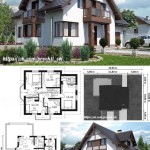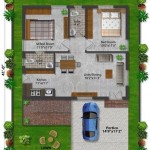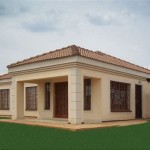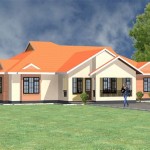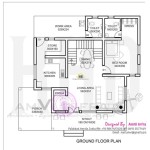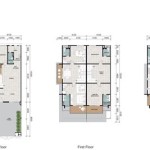How To Make A Plank House With Popsicle Sticks
Constructing a miniature plank house utilizing popsicle sticks offers an engaging and educational project. It combines creativity, fine motor skills, and an understanding of basic structural principles. This article provides a comprehensive guide on how to build a sturdy and aesthetically pleasing popsicle stick plank house.
Gathering Materials and Tools
The first step involves procuring the necessary materials. The primary component is popsicle sticks, often available in bulk at craft stores or online retailers. Quantity will depend on the desired size of the house, but a minimum of 200-300 sticks is recommended for a moderately sized structure. In addition to popsicle sticks, wood glue or a hot glue gun (with adult supervision) is required for adhering the sticks together. A cutting tool, such as a craft knife or small saw, is essential for trimming popsicle sticks to specific lengths. A ruler or measuring tape will ensure accurate measurements, while sandpaper will smooth rough edges and create a more polished finish. Optional materials include acrylic paints or stains to decorate the house, and small decorative elements like pebbles, twigs, or artificial moss to enhance the realism of the scene.
The choice of glue is crucial for the project's success. Wood glue provides a strong, permanent bond, but requires a longer drying time. Hot glue, on the other hand, offers a faster setting time, facilitating quicker progress. However, it may not be as durable as wood glue and requires careful handling to avoid burns. When employing hot glue, ensure adequate ventilation and adult supervision, especially for younger participants.
Building the Base and Walls
The foundation of the house is critical for its overall stability. Begin by constructing a rectangular base using popsicle sticks. The size of the base will determine the dimensions of the house. Align popsicle sticks side by side to form the desired width and length, and then glue them together. Reinforce the base by adding a second layer of popsicle sticks perpendicular to the first layer, creating a sturdier platform. Allow the glue to dry completely before proceeding.
With the base established, the next step is to build the walls. The plank house design uses popsicle sticks arranged horizontally to mimic wooden planks. Apply a thin line of glue along the edge of the base and attach a popsicle stick. Repeat this process, layering popsicle sticks one on top of the other, until the desired wall height is achieved. Ensure that each stick is aligned properly and securely glued to the sticks below. Staggering the joints between sticks, similar to bricklaying, will enhance the wall's structural integrity.
Consider incorporating windows and doors into the wall design as it is being built. Cut out rectangular or arched openings in the walls by trimming popsicle sticks to the appropriate lengths. Reinforce the openings by framing them with additional popsicle sticks to prevent the wall from collapsing. The dimensions of the openings should be determined based on the planned scale of the house. It is important to plan the placement of windows and doors before constructing the walls to ensure symmetry and aesthetic balance. The use of a template or sketch can be helpful in visualizing the final design.
For added stability, construct corner posts using stacks of popsicle sticks glued together. Attach these corner posts to the interior corners of the walls. These posts will provide vertical support and prevent the walls from buckling. Reinforce the joints between the walls and the base by applying glue along the interior seams.
Creating the Roof Structure
The roof is an integral part of the plank house, providing both protection and visual appeal. There are several different roof designs that can be implemented using popsicle sticks, including a simple flat roof, a gabled roof, or a more complex hip roof. A gabled roof, characterized by two sloping sides meeting at a ridge, is a common and relatively straightforward option for a popsicle stick house.
To construct a gabled roof, begin by measuring the width of the house. Cut two popsicle sticks to the required length to serve as the ridge beam. These ridge beams will form the peak of the roof. Then, create the rafters, which are the sloping beams that support the roof surface. Determine the desired angle of the roof slope and cut popsicle sticks to the appropriate length to form the rafters. The angle can be adjusted to create a steeper or shallower roof pitch.
Attach the rafters to the ridge beams at the desired angle, forming a triangular frame. Repeat this process to create multiple rafter frames, spacing them evenly along the length of the house. Glue the rafter frames to the top of the walls, ensuring that they are securely attached. The spacing between the rafter frames will depend on the length of the house and the desired strength of the roof.
Once the rafter framework is in place, cover the roof with popsicle stick planks. Overlap the sticks slightly to create a watertight seal and to mimic the appearance of shingles. Glue the popsicle sticks to the rafters, working from the bottom of the roof upwards. Trim any excess popsicle sticks along the edges of the roof to create a clean, finished appearance. Consider adding a small overhang to the roof to protect the walls from rain and snow.
For added realism, consider adding a chimney to the roof. Construct the chimney by gluing popsicle sticks together to form a square or rectangular tube. Attach the chimney to the roof near the ridge beam. The chimney can be painted or stained to match the color of the house.
Adding Details and Finishing Touches
Once the basic structure of the plank house is complete, personalize it with details and finishing touches. These embellishments enhance the aesthetic appeal and transform the simple structure into a more realistic and engaging miniature dwelling. The possibilities for customization are limited only by imagination and available materials.
Consider adding a porch to the front of the house. The porch can be constructed using popsicle sticks to create a small platform extending from the front door. Add a railing along the edge of the porch for safety and visual interest. The railing can be made from thin strips of popsicle sticks or from small twigs.
Create doors and windows using popsicle sticks and small pieces of cardboard or acetate. The doors can be hinged using small pieces of fabric or tape. The windows can be glazed with clear acetate to simulate glass. Add small details such as door knobs and window latches using beads or small pieces of wire.
Landscaping can further enhance the realism of the scene. Create a small yard around the house using artificial moss, pebbles, and small twigs. Plant miniature trees and shrubs using artificial foliage. Add a small path leading to the front door using pebbles or small stones.
Painting or staining the plank house will give it a more finished and polished look. Choose colors that complement the overall design and create the desired atmosphere. Consider using multiple colors to highlight different elements of the house. Apply a sealant or varnish to protect the paint and to give the house a more durable finish.
Add small decorative elements such as miniature furniture, figurines, or lighting to complete the scene. These details will bring the plank house to life and create a more inviting and engaging miniature world. Source commercially available miniature accessories or create elements from readily available materials.

Simple Popsicle Stick Fairy House Garden Diy

Simple Popsicle Stick Fairy House Garden Diy

How To Make A Popsicle Stick Up House Studio Diy

Building A House With Popsicle Sticks Sheknows

Log Cabin Miniature Balsa Popsicle Sticks

Pin On Thanksgiving Steam

How To Make A Popsicle Stick House Easy

Simple Popsicle Stick Fairy House Garden Diy

How To Make A Popsicle Stick Up House Studio Diy

Dollhouse Completely Made Out Of Popsicle Sticks Using Principles Building An Actual House Stick Crafts Houses


